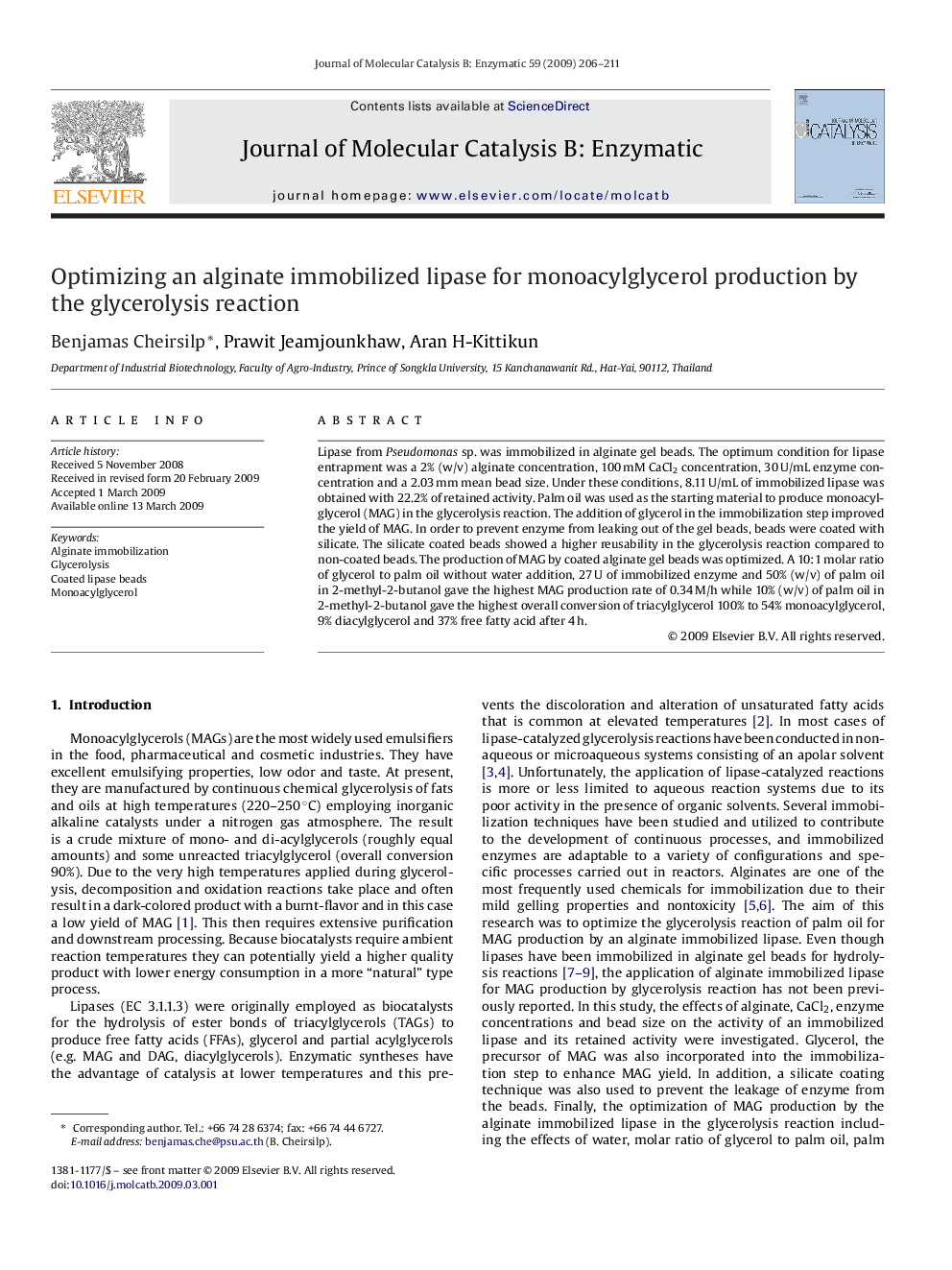| Article ID | Journal | Published Year | Pages | File Type |
|---|---|---|---|---|
| 70650 | Journal of Molecular Catalysis B: Enzymatic | 2009 | 6 Pages |
Lipase from Pseudomonas sp. was immobilized in alginate gel beads. The optimum condition for lipase entrapment was a 2% (w/v) alginate concentration, 100 mM CaCl2 concentration, 30 U/mL enzyme concentration and a 2.03 mm mean bead size. Under these conditions, 8.11 U/mL of immobilized lipase was obtained with 22.2% of retained activity. Palm oil was used as the starting material to produce monoacylglycerol (MAG) in the glycerolysis reaction. The addition of glycerol in the immobilization step improved the yield of MAG. In order to prevent enzyme from leaking out of the gel beads, beads were coated with silicate. The silicate coated beads showed a higher reusability in the glycerolysis reaction compared to non-coated beads. The production of MAG by coated alginate gel beads was optimized. A 10:1 molar ratio of glycerol to palm oil without water addition, 27 U of immobilized enzyme and 50% (w/v) of palm oil in 2-methyl-2-butanol gave the highest MAG production rate of 0.34 M/h while 10% (w/v) of palm oil in 2-methyl-2-butanol gave the highest overall conversion of triacylglycerol 100% to 54% monoacylglycerol, 9% diacylglycerol and 37% free fatty acid after 4 h.
